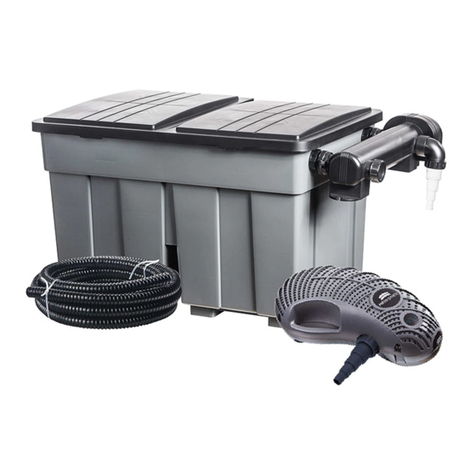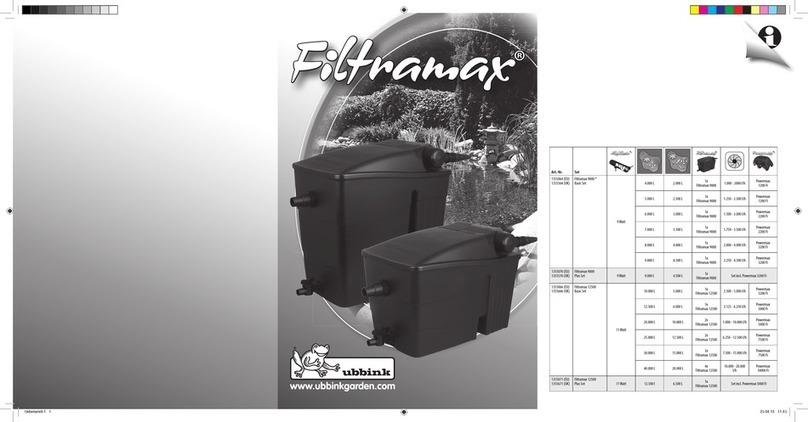
9
Model FF4 Metal Separator
BURN HAZARD
In case of product temperatures of more than
140°F (+60°C) there is danger of burning at
parts in contact with the product. During
operation, suitable protective facilities must be
attached that prevent any touching of the danger
spots.The product flow must be interrupted before
any maintenance or cleaning work is started. Any
such work may only be performed after the parts
in contact with the product have cooled down.
WARNING
If the reject unit should be removed from the
conveyor pipe for maintenance or cleaning
purposes, always observe the following information
relating to the own weight of the reject unit. Always
first support the reject unit with suitable lifting
means, and only then loosen the fastening screws
at the clamping ring.
SAFETY INFORMATION FOR INSTALLATION
AND DISMANTLING
In case of incorrect installation, the own weight
of the machine may lead to personal injuries.
Always use suitable lifting means to transport the
machine to the intended place, and screw it to
a wall, ceiling, or frame using the four fastening
screws. Only remove the lifting means after
all four fastening screws have been tightened.
Dismantling is done in reverse order.
SAFETY INFORMATION FOR STORAGE
AND TRANSPORT
Always observe the information in Shipping,
Preservation,Waste Disposal, Transport and
Storage to avoid any transport damage and
personal injuries.
SAFETY INFORMATION FOR
COMMISSIONING, OPERATION,
MAINTENANCE AND CLEANING
The mechanism of the separation unit is covered
by a screwable protective cover. Due to the
cylinder movements there is danger of hand
injuries in the separation unit. If the protective
cover of the separation unit is removed, the
compressed air supply must first be interrupted
and the air tubes must be vented. Compressed
air supply may only be connected again after
the protective cover has been successfully
closed again. The protective cover of the
separation unit must always be kept closed
during operation.
When the reject flap is operating, there is danger
of crushing between reject flap and the housing
panel. During operation all the protective devices
that prevent any reaching into the inlet, normal
SAFETY INFORMATION
FOR OPERATORS
The FF4 Metal Separator may only be operated
in the intended purpose and in a perfect
functioning condition, especially all the covers
have to be closed during operation. When the
reject flap is operating there is danger of
crushing your fingers. With passage openings
larger than 2.76" (70 mm), it is possible to reach
into the danger spot. Therefore, a pipe of 1.64"
(0.5 m) must be flanged at the inlet, and pipes
of 2.95" (0.9 m) at the outlets, or other measures
must be taken to prevent any reaching into the
reject mechanism. If the product temperature is
higher than 140°F (+60°C) there is danger of
burning at parts in contact with the product.
It is recommended to use a kind of enclosure
or another measure to prevent touching of the
danger spots. All the safety and warning signs
at the system must not be removed and must
be kept in well recognizable condition. The
operating instructions always have to be in a
legible condition and complete available. The
owner may only appoint qualified personnel for
operation, maintenance and repair work. During
works on the pneumatic or the electric section
power supply and compressed air supply have
to be interrupted or disconnected.
outlet, or reject outlet must always be attached.
The reject unit must be firmly connected to the
conveyor pipe. If the separation unit or protective
devices are removed from the conveyor pipe for
maintenance or cleaning purposes, the
compressed air supply must first be interrupted
and the compressed air tubes must be vented.
Compressed air supply may only be connected
again when the protective devices have been
attached again and the separation unit has been
successfully mounted to the conveyor pipe again.






























